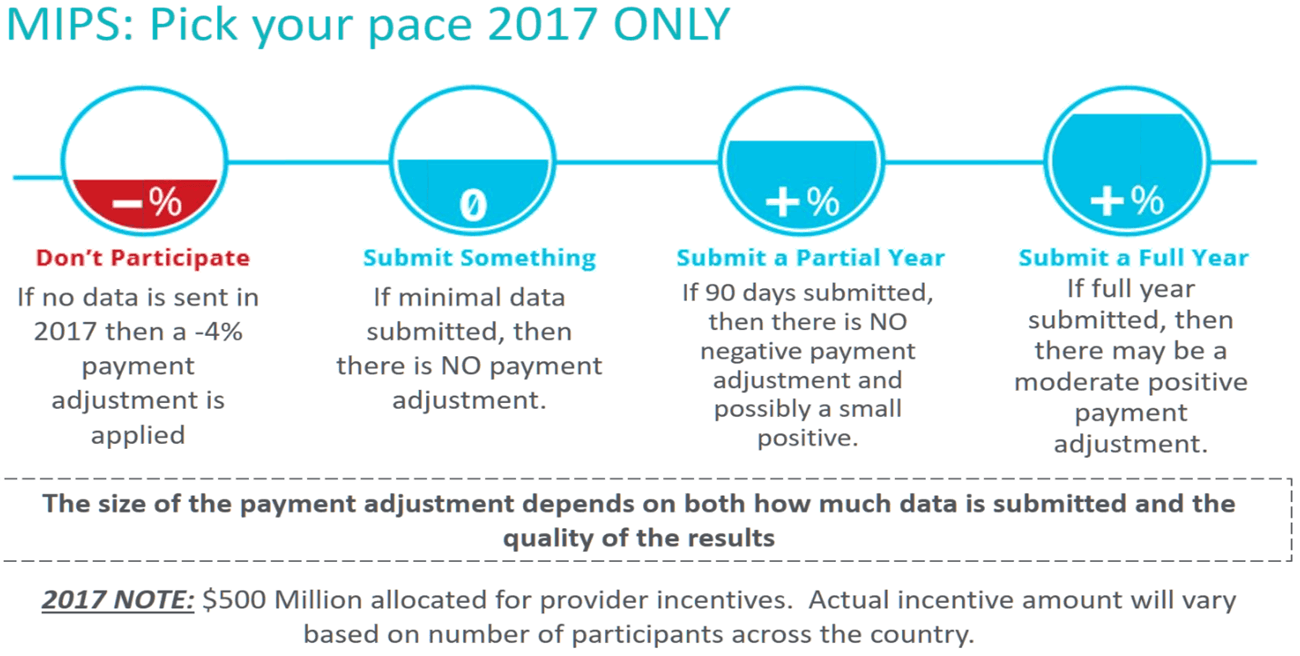The Medicare Access and CHIP Reauthorization Act (MACRA) went into effect January 1, 2017. The final MACRA ruling offers two tracks for compliance: 1) Merit-Based Incentive Payment System (MIPS); and 2) Advanced Alternative Payment Models (APMs). However, only MIPS may be used in 2017.
For dermatologists, MIPS seems to be the best path to long-term MACRA compliance. The American Academy of Dermatology (AAD) agrees. APMs are similar to an Accountable Care Organization (ACO), and the number of criteria to qualify is significant. Additionally, other providers within the APMs network could negatively impact your reimbursement should they not perform well. With MIPS, each practice is only judged on its own data. High-quality providers can benefit from this model.
The goal of MACRA is to move healthcare providers away from the traditional fee-for-service model and instead tie reimbursement to quality of service. The Centers for Medicare and Medicaid Services (CMS) created a graduated scale of financial incentives and penalties to encourage providers to adapt. For this year, physicians have a choice regarding their level of participation. However, the benefit of full reporting can positively impact a practice’s bottom line, as well as position it to optimize reimbursement in subsequent years.
A lack of internal resources is often cited as the reason why many independent dermatologists are not MIPS ready. That is not surprising, considering CMS’ final MACRA ruling is an expansive 2,400 pages.
Weighted Reporting Categories
MIPS requires physicians to report information in four categories:
- Quality
- Cost
- Advancing Care Information
- Clinical Practice Improvement Activities
As shown in the chart below, each of these categories is weighted to form a single MIPS composite score that will impact reimbursement. Capturing this information is a challenge, as well as a financial burden, for many dermatology practices. Integrating these metrics into the daily practice workflow is the best way to ensure all data is captured in a way that can be easily reported by the March, 2018, deadline.
QualDerm’s Data Capture and Reporting
QualDerm Partners’ IT department proactively built these MACRA / MIPS reporting categories into our Electronic Health Records (EHR) system. Our IT staff worked with our partner dermatologists to tailor these reporting categories specifically for the practice of dermatology. Additionally, QualDerm’s internal IT support staff trained the providers on the new system and provides on-going user support.
As a result, our practice partners have been capturing the necessary data as part of their everyday workflow well in advance of the January 1 MACRA start date. This allows the QualDerm-affiliated practices to report a year’s worth of data for 2017, avoiding penalties and positioning them to earn reimbursement bonuses that CMS has earmarked for exceptional performers.
As an added benefit, QualDerm uses this data to help our dermatologists improve workflow efficiencies. The captured quality data is also leveraged during payor contract negotiations.
As new practices affiliate with QualDerm, the customized EHR system is integrated. This ensures those practices are fully MACRA compliant to optimize reimbursement.
Contact us to learn more about how partnering with QualDerm helps ensure your practice’s legal and regulatory compliance while enhancing financial performance.

